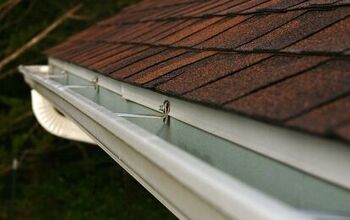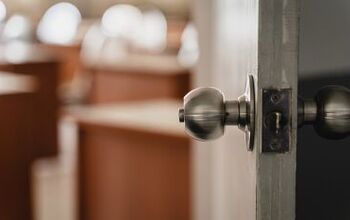Eavestroughs Vs. Gutters: What Are The Major Differences?

Throughout the years, you’ve probably seen the terms ‘eavestroughs’ and ‘gutters’ used interchangeably, and you’ve probably wondered if they actually mean the same thing. There are a few tiny differences between them, even though they both pertain to similar characteristics of a property.
There are distinct differences between eavestroughs and gutters such as the size, and the location they’re installed. Gutters are part of a bigger system where the drains are all connected to a number of houses. On the other hand, eavestroughs are connected to only one particular house where water drains from one site.
In this article, we will talk about the differences between the eavestroughs and gutters to help you better understand which would work for your home.
Do You Need Roofing, Siding, or Gutter Installers?
Get free, zero-commitment quotes from pro contractors near you.

Differences Between Eavestroughs And Gutters
While both phrases relate to the rainfall drainage system that removes water from your roof, there are a few distinctions between the two terms.
Size Of system
While the terms are now interchangeable when referring to the same object on a house or structure, gutter was once more commonly used to refer to the bigger system that connects a number of houses and buildings to drain them all in the same connected system.
On the other hand, an eavestrough was supposed to be utilized on a particular house or building to drain waste and water from that specific site.
Location
One of the most prevalent distinctions between these phrases is the context in which they are employed. In the United States, the term gutter is frequently used, although in Canada, the term eavestrough is more usually used.
Different Types Of Systems
Eavestrough and gutter systems can be composed of a number of materials, although plastic and metal are the most prevalent.
There are several aspects to consider when deciding the material to utilize for your home. The amount of rain that falls in your location, the size of your roof, and the usual temperature in the area can all influence your decision.
Vinyl Eavestroughs
These plastic-based systems are popular because to their cost-effectiveness. They’re also lightweight and simple to install for DIYers, but they can crack in colder climes, and if not installed properly, they can cause water to pool in places it shouldn’t.
Aluminum Eavestroughs
These are simple to install, rust-resistant, and can survive extreme cold. This is a fantastic alternative for most cases if you don’t plan on putting your ladder up against your eaves on a regular basis, risking denting the softer metal.
Stainless Steel Eavestroughs
While stainless steel is the most durable material available, it is also the most expensive. Stainless steel eavestroughs are an excellent alternative if you’re looking for a long-lasting and strong option and can afford the higher price tag.
What Are The Benefits Of Eavestrough?
There are many different benefits of eavestrough, which we go through below.
Efficient Water Drainage
Consider the case where your home’s roof lacks an eavestrough system. How does melted snow or rainwater drain off the roof? Isn’t it falling directly from the roof?
This causes water splatters on your home’s walls, which can leave unclean and muddy markings. Furthermore, heavy rain can damage the soil and possibly oversaturate it. Oversaturation of soil along the foundation of your home might cause structural damage.
All of these problems are solved by installing an eavestrough, which collects melted snow along a well-defined path and drains it to the correct location via downspouts.
No Yard Flooding
Snow will melt at a faster rate as the days become hotter. This indicates that there will be a lot of water available, which will necessitate methodical drainage.
Because your ground-level drainage system will not be able to handle a large volume of water, water will fall from the roof at random and flood your yard. This will also be the case if there is a lot of rain. As a result, you’ll need a system that can gather and drain water at a moderate rate.
If your yard has various drainage sites, you might also have multiple downspouts. This will only help with drainage and prevent yard floods.
Reduced Major Damages
As previously stated, water that falls freely from the roof can cause soil erosion and oversaturation. These concerns definitely have an impact on the plants and bushes that grow close to the main structure of your home.
Excess water may cause these plants to wilt or their limbs to snap. Aside from the damage to your lawn, oversaturation can cause ground settling, basement floods, under-house flooding, deck and patio cracks, and other foundational issues.
You may avoid these issues and maintain the health of your property by directing water away from the residence.
Prevent Roof Rotting
When melted snow does not drain properly, it collects in various regions of your roof. If the snow gets beneath the roof shingles, it will melt and stay there if there isn’t an appropriate drainage system in place.
Standing water can do serious damage to your roof. Soffit, fascia, shingles, and the entire system can be rotted by water. This can be dangerous for your home because you never know when the roofing will fail and cause disaster.
When eavestrough is put on a properly sloped roof surface, it ensures that all of the water drains away, allowing the roofing system to dry naturally in the sun.
No Structural Damages
Another reason to consider eavestrough installation is that it protects your home from structural damage. Standing water on your roof causes damage to more than just your roof’s components.
Attic leaks can occur when water collects for an extended period of time. Standing water, even if there are no leaks, can cause the ceiling to get extremely damp.
Mold grows on the inner surface of a moist ceiling, resulting in obvious wet patches. It can also cause the ceiling to rot and disintegrate. The eavestrough prevents these structural hazards by properly draining melted snow.
Taking Care Of Your Eavestroughs
Maintaining your eavestrough system is the most critical thing you can do to protect your investment. Eaves, which are frequently disregarded during the spring and autumn yard maintenance seasons, may quickly get cluttered and clogged. This can also happen following a major storm.
When eaves become blocked, the water that should be draining is unable to do so, resulting in overflow, pooling, and flooding. If the pooling or overflow becomes too severe, or if it collects in the wrong place, it can cause serious problems with your roof and foundation.
Advantages Of Installing Seamless Gutters
Seamless gutters are a visually appealing gutter system that offers a number of benefits to homeowners who choose to put them on their home.
Let’s take a closer look at why seamless gutters are the best option for gutter replacement the next time you need one:
Reduced Debris Build-up
Seamless gutters, unlike sectional gutters, do not have lips or joints where leaves, dirt, and other debris might accumulate.
This is a huge benefit for any homeowner because it reduces the amount of upkeep required throughout the year. Attempting to clear your gutters with seamless gutters will save you from any painful falls or accidents.
Custom Cuts
Seamless gutters are made up of a single solid strip that is custom-fitted to your home’s roof. This ensures that your new seamless gutters have the most perfect specifications possible, allowing them to successfully dissipate water away from your roof and home.
Less Leakage
Sectional gutters contain joints where two pieces connect, and gap between the sections can develop with time, enabling rainfall to soak through. Another benefit of seamless gutters is that they have fewer seams, which means less rainwater leakage.
During strong storms, you’ve certainly seen gutters that drip and leak, spreading water all around a house’s foundation, potentially causing more difficulties. With properly built seamless gutters, this problem is virtually eliminated.
Fewer Joints
Seamless gutters feature fewer joints, which is advantageous in various ways. Not only will there be less debris build-up, resulting in less maintenance, but it will also give your property a more desirable appearance.
Fewer gutter joints give your home a much cleaner, more appealing appearance, increasing its curb appeal and property value.
Appealing Aesthetics
Seamless gutters are a popular gutter system because they are sleek, smooth, and don’t have the gaps between joints as sectional gutters do.
Installing seamless gutters is a surefire way to increase the value of your home in the event of a future sale. Seamless gutters are considered far more appealing than their segmented counterparts, so potential purchasers will appreciate the tiny touch.
Do You Need Roofing, Siding, or Gutter Installers?
Get free, zero-commitment quotes from pro contractors near you.

DIY Or Professional?
Though it may appear to be a simple job to tackle on your own, if you’re not used to working at the top of a ladder, it’s probably best to call in some help. Hiring a professional to help you get your eavestroughs in good working order will relieve stress and guarantee that they are installed properly to provide the finest drainage for your property.
There are distinct differences between eavestroughs and gutters such as the size, and the location they’re installed. Gutters are part of a bigger system where the drains are all connected to a number of houses. On the other hand, eavestroughs are connected to only one particular house where water drains from one site.

Heather is a passionate writer who loves anything DIY. Growing up, she learned everything from home repairs to design, and wants to share her tips with you. When she's not writing, she's usually hiking or searching for her next DIY project.
More by Heather Robbins



























